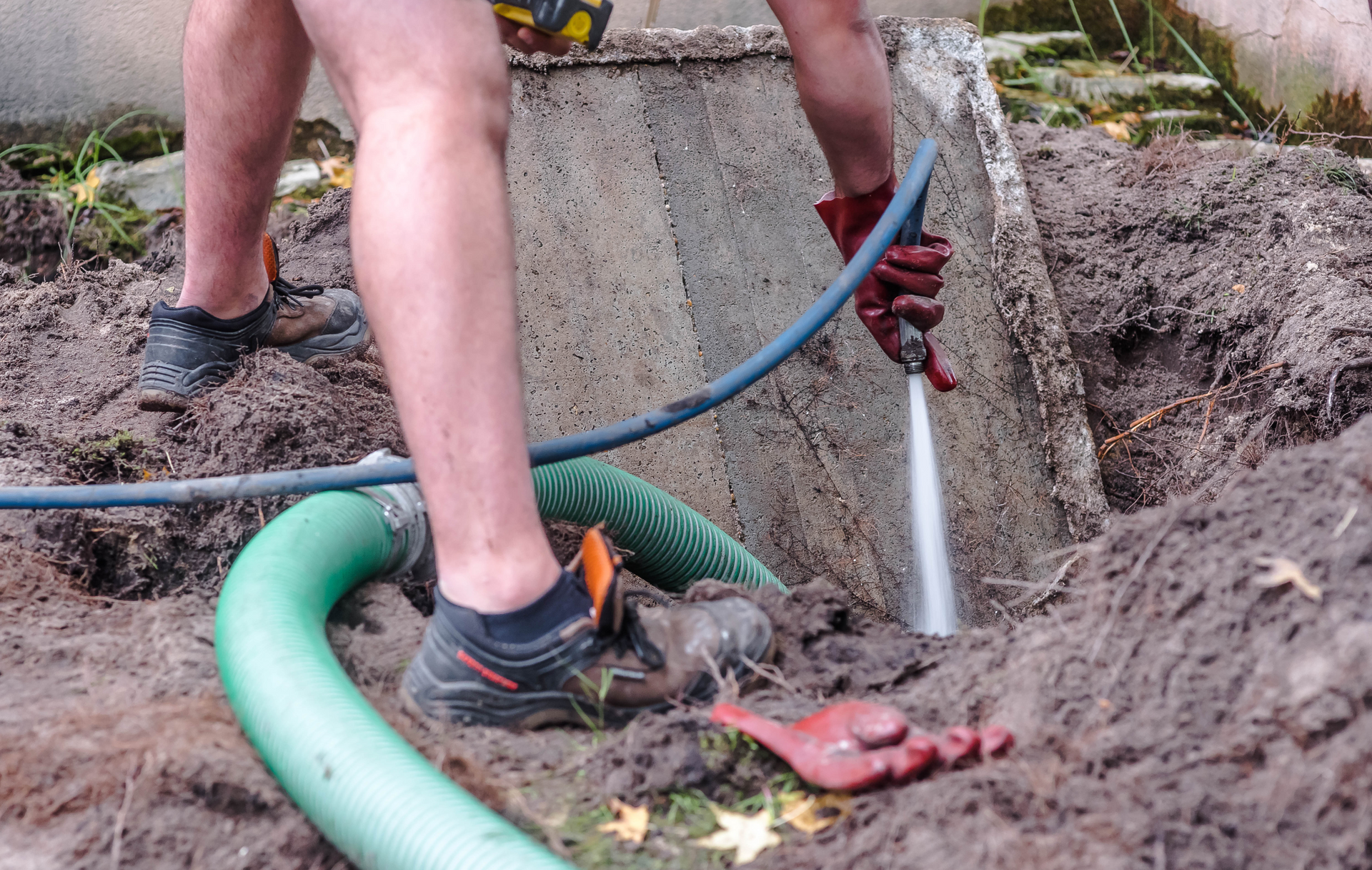Understanding Leach Fields: Services Offered by Oxford Septic Services
August 7, 2024
Leach fields, also known as drain fields, play a crucial role in the proper functioning of a septic system by facilitating the filtration and disposal of wastewater. At Oxford Septic Services, we understand the importance of maintaining a healthy leach field to ensure the longevity and efficiency of your septic system. In this comprehensive guide, we'll explore the functions of leach fields, common issues that can arise, and the range of services offered by Oxford Septic Services to address these concerns.
Chapter 1: The Role of Leach Fields in Septic Systems
Explanation of how leach fields work to distribute treated wastewater from the septic tank into the surrounding soil
Importance of proper design, installation, and maintenance to prevent issues such as clogging, saturation, and soil contamination
Overview of the components of a leach field system, including perforated pipes, gravel beds, and soil absorption areas
Chapter 2: Common Issues with Leach Fields
Identification of common problems that can affect the functionality of leach fields, such as hydraulic overload, root intrusion, and soil compaction
Discussion of signs that indicate potential leach field issues, including soggy ground, foul odors, and sewage backups in the home
Impact of neglected leach field maintenance on the performance of the entire septic system and the environment
Chapter 3: Leach Field Inspection and Maintenance Services
Description of Oxford Septic Services' comprehensive leach field inspection services, including visual assessments, soil testing, and hydraulic load testing
Explanation of proactive maintenance measures, such as vegetation management, water conservation strategies, and effluent filter cleaning
Importance of regular inspections and maintenance to identify and address potential leach field issues before they escalate
Chapter 4: Leach Field Repair and Rehabilitation
Overview of Oxford Septic Services' leach field repair and rehabilitation services, including soil aeration, bio-remediation, and trench replacement
Discussion of advanced repair techniques, such as hydraulic fracturing and soil injection, to restore proper drainage and absorption capabilities
Commitment to environmentally friendly solutions that minimize disruption to the surrounding landscape and ecosystem
Chapter 5: Leach Field Replacement Options
Explanation of when leach field replacement may be necessary due to irreparable damage, system failure, or regulatory compliance issues
Overview of Oxford Septic Services' leach field replacement services, including site evaluation, design planning, and installation of new drain fields
Importance of working with a qualified septic service provider to ensure proper sizing, placement, and construction of a new leach field system
Conclusion:
Leach fields are essential components of septic systems that require regular inspection, maintenance, and occasional repairs to function properly. By understanding the role of leach fields, recognizing common issues that can arise, and partnering with a trusted septic service provider like Oxford Septic Services, homeowners can ensure the continued efficiency and longevity of their septic systems. Whether you need a routine inspection, maintenance services, or leach field repair/replacement, our experienced team is here to help. Schedule an appointment with Oxford Septic Services today and enjoy peace of mind knowing that your leach field is in good hands.

Oxford Septic Services plays a crucial role in ensuring the health and functionality of septic systems in our community. With years of experience and expertise, our team is dedicated to providing top-quality services to homeowners and businesses alike. In this guide, we'll explore the vital role that Oxford Septic Services plays in maintaining healthy septic systems and preserving the well-being of our environment. Chapter 1: Comprehensive Septic System Maintenance Oxford Septic Services offers comprehensive maintenance services designed to keep septic systems running smoothly. From regular inspections to proactive maintenance measures, our team ensures that septic systems remain in optimal condition year-round. Chapter 2: Professional Septic Tank Pumping Regular septic tank pumping is essential for preventing backups and maintaining the proper functioning of septic systems. Oxford Septic Services provides professional pumping services tailored to the unique needs of each property, ensuring efficient removal of waste and sludge. Chapter 3: Prompt Septic System Repairs When issues arise with septic systems, prompt repairs are crucial to prevent further damage and ensure continued functionality. Oxford Septic Services offers timely and reliable repair services, addressing issues such as leaks, clogs, and drain field problems with expertise and efficiency. Chapter 4: Expert Leach Field Services Leach fields are an integral part of septic systems, responsible for filtering and dispersing wastewater into the soil. Oxford Septic Services offers expert leach field services, including inspections, repairs, and installations, to ensure the proper functioning of this critical component. Chapter 5: Emergency Septic Services Septic emergencies can occur at any time, posing significant risks to property and health. Oxford Septic Services offers emergency services around the clock, providing prompt response and effective solutions to mitigate damage and restore functionality. Chapter 6: Residential and Commercial Solutions Whether it's a residential property or a commercial establishment, Oxford Septic Services offers tailored solutions to meet the unique needs of each client. From small homes to large commercial properties, our team has the expertise and resources to handle any septic system challenge. Chapter 7: Environmental Stewardship At Oxford Septic Services, we are committed to environmental stewardship and sustainable practices. We prioritize eco-friendly solutions and responsible waste management techniques to minimize our impact on the environment and protect natural resources. Conclusion: Oxford Septic Services plays a vital role in maintaining healthy septic systems and preserving the well-being of our community. With comprehensive maintenance services, prompt repairs, and a commitment to environmental stewardship, our team ensures that septic systems remain in optimal condition for years to come. Trust Oxford Septic Services for all your septic system needs and experience the difference firsthand.

Septic tank pumping is a crucial aspect of septic system maintenance that often goes overlooked by property owners. Regular pumping helps prevent costly repairs, prolongs the lifespan of the septic system, and protects the environment from contamination. In this guide, Oxford Septic Services shares valuable insights into the importance of routine septic tank pumping and its many benefits. Chapter 1: Understanding the Role of Septic Tank Pumping Overview of the septic tank pumping process and its significance in maintaining a healthy septic system Explanation of how septic tank pumping removes accumulated solids and sludge from the tank, preventing clogs and backups Chapter 2: Preventing Costly Repairs and System Failures Discussion of the potential consequences of neglecting septic tank pumping, including system backups, drain field damage, and groundwater contamination Exploration of the financial implications of septic system repairs and replacements compared to the relatively low cost of routine pumping Chapter 3: Extending the Lifespan of Your Septic System Explanation of how regular septic tank pumping helps prolong the lifespan of the septic system by reducing stress on system components and preventing premature failure Discussion of the correlation between routine pumping and the overall health and longevity of the septic system Chapter 4: Protecting the Environment and Public Health Examination of the environmental and public health risks associated with untreated wastewater discharge from poorly maintained septic systems Explanation of how routine septic tank pumping helps mitigate these risks by preventing groundwater contamination and protecting local water sources Chapter 5: Maintaining Property Value and Resale Potential Exploration of the impact of a well-maintained septic system on property value and resale potential Discussion of how routine septic tank pumping demonstrates responsible property ownership and can increase buyer confidence during real estate transactions Chapter 6: Ensuring Regulatory Compliance Overview of local regulations and requirements regarding septic system maintenance and pumping frequency Explanation of how routine septic tank pumping helps property owners remain in compliance with regulatory standards and avoid potential fines or penalties Chapter 7: Best Practices for Scheduling Septic Tank Pumping Recommendations for establishing a regular pumping schedule based on factors such as household size, water usage, and septic system capacity Tips for working with professional septic service providers like Oxford Septic Services to schedule timely and efficient pumping services Conclusion: Routine septic tank pumping is an essential aspect of responsible septic system ownership, offering numerous benefits for property owners, the environment, and public health. By understanding the importance of routine pumping and working with trusted professionals like Oxford Septic Services, property owners can ensure the long-term performance and reliability of their septic systems.
